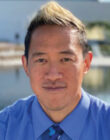
On December 14, 2023, the Royal College of Dental Surgeons of Ontario (RCDSO) published a document entitled “Best Practices for Orthognathic Surgery in Out-Of-Hospital Facilities” (referred to as the “Best Practices Document” in the rest of this article), in which it specified a recommendation that, “[t]he general anaesthesia is administered by a medical anesthesiologist…” but failed to include specialists in Dental Anaesthesiology. The Canadian Academy of Dental Anaesthesia (CADA) immediately notified the RCDSO of the oversight, and we are keenly awaiting a response in regard to the need for revision.
We hope this omission was not purposeful. If it was, however, it begs the question whether the reach of regulatory oversight in healthcare should be applied to a specific clinical procedure, or to the qualifications of individuals performing it.
If you are not a Dentist-Anaesthesiologist, why should you care? Imagine if you were restricted from placing an implant as a general practitioner, not because you were not adequately trained or experienced, but simply because “best practice” designated only periodontists for this procedure. Imagine a regulation that recommended that it would be “best practice” if you did not perform endodontic treatment on multi-rooted teeth with curved roots because, well, they are curved! Overlaps in scope of practice are common between specialties within health care professions like medicine and dentistry as well as between health care professions themselves. Jaw fracture reduction and cleft lip repair are examples of procedures that may be performed by Dental Specialists but also by Plastic Surgeons, and Otolaryngologists. Looping back to anaesthesiology, in the United States, it is practiced by Certified Registered Nurse Anesthetists (CRNAs), Osteopathic-Anesthesiologists, Medical-Anesthesiologists, and Dentist-Anesthesiologists.
In this specific case, the CADA strongly believes that the training, experience, and competency of the individual provider of general anaesthesia for orthognathic surgery should be the primary considerations in evaluating the best practice recommendations and not the surgery itself.
The CADA acknowledges that orthognathic surgery, like many other specialized procedures, carries “procedure-specific” anaesthetic considerations including but not limited to: appropriate provider training, provider experience, patient preparation, patient evaluation, pharmacology, equipment, site-specific considerations, and requiring specialized health-care team personnel. However, the omission by the Best Practices Document does not recognize these facts directly.
In its letter to the RCDSO, the CADA drew attention to the fact that many Dental-Anaesthesiologists have had appropriate scope and depth of training to administer blood and blood products, to provide induced hypotensive anaesthesia, to execute appropriate extubation and emergency procedures and protocols in the setting of maxillo-mandibular fixation. It is noteworthy that most dental anesthesiologists are experienced in performing nasotracheal intubations, a technique routinely required for orthognathic surgery. This is due to their routine practice, where nasotracheal intubations are more common than the oral route.
This recent situation is in effect, an important parable, in which the outcome is still to be determined, but will set a precedent for regulation of clinical practice in the future. The CADA holds paramount, the protection of the health and well-being of patients as our primary goal and we see this being in common with the spirit of the stated mandate of all health care regulators. The Dentist-Anesthesiologist members in the CADA provide a wealth of expertise and experience in anaesthesia-related matters. We have and will continue to operate with an open-door policy for feedback on any future proposed best practice documents or regulations. We truly believe a co-operative approach between regulators and practicing dentists will help to maintain the excellent level of care we provide for our patients.
Oral Health welcomes this original article.
About the Author:

Dr. Jason K. Wong, President, Canadian Academy of Dental Anaesthesia. Dr. Wong is past-president of the Ontario Dental Society of Anesthesia, and also past-president of the Waterloo-Wellington Dental Society. He has been engaged in full-time private practice in Kitchener, Ontario, for over 20 years at Dental Care Asleep, providing general anesthesia and sedation for dentistry for pediatric and adult patients.
Dr. Wong is the president-elect of the Canadian Academy of Dental Anaesthesia (CADA). The CADA is a voluntary non-profit organization of dentist-anesthesiologists across Canada. The CADA is the sponsoring body of the recently (2023) recognized specialty of Dental Anesthesia by the Canadian Dental Regulatory Authorities Federation. The CADA supports scientific advancement, patients safety, and ongoing advanced training and education in anesthesia for dentist-anesthesiologists.









